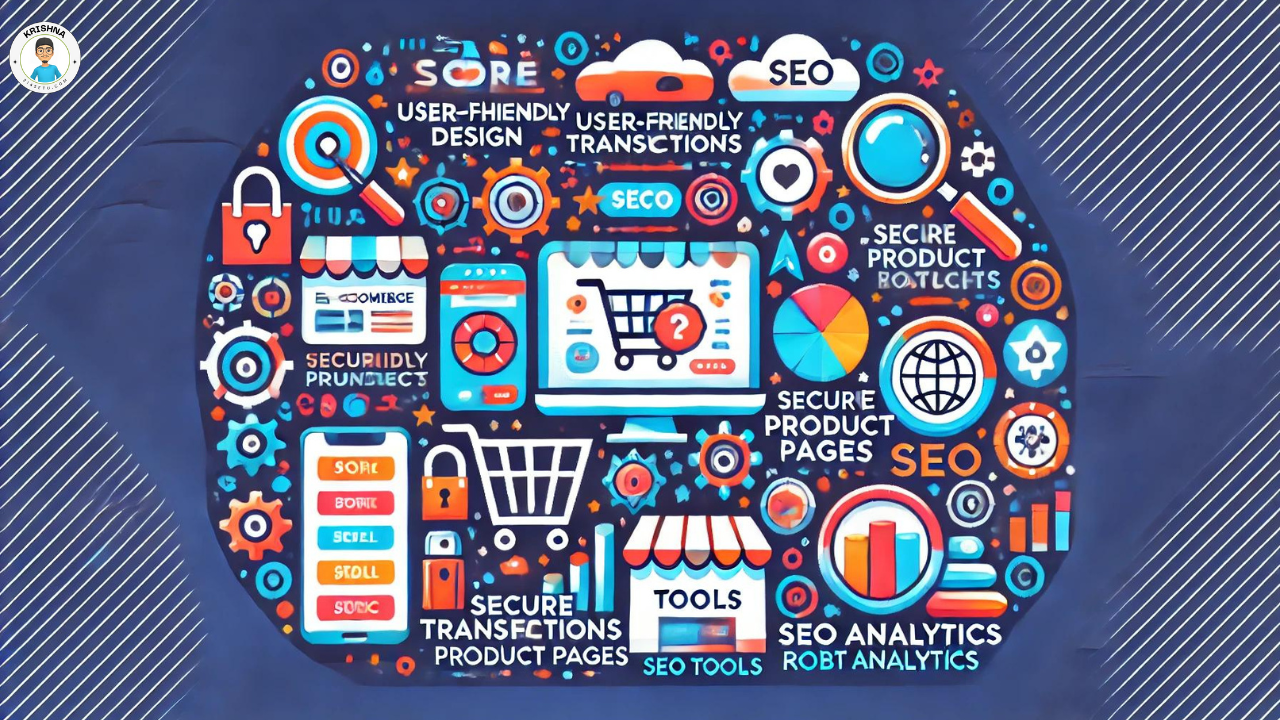
So, you’re looking to build or upgrade your ecommerce website? Awesome! Whether you’re just starting out or looking to enhance your existing site, knowing the essential features is key to creating a successful online store. Let’s dive into the must-have features that can help your ecommerce site shine and keep your customers coming back for more.
Ultimate Guide to Top Ecommerce Website Development
User-Friendly Design: Keep It Simple and Intuitive
Easy Navigation
Think of your website as a store. You wouldn’t want your customers to get lost, right? Easy navigation helps users find what they’re looking for quickly and efficiently.
- Example: Use clear categories, a prominent search bar, and breadcrumb trails. Imagine how easy it is to shop on Amazon with its straightforward menu and filters.
Mobile Responsiveness
With more people shopping on their phones, your site needs to look and function great on all devices.
- Example: Check out how seamlessly the Nike website transitions from desktop to mobile. The experience is smooth and intuitive no matter the device.
Secure and Reliable Shopping Experience
SSL Certification
Security is a top priority. SSL certification encrypts user data, ensuring that transactions are safe.
- Example: Notice the padlock icon next to the URL on sites like eBay? That’s SSL in action, providing a secure connection.
Multiple Payment Options
Offering various payment methods makes it convenient for your customers to complete their purchases.
- Example: Think of sites like Etsy, which accept credit cards, PayPal, Apple Pay, and more, catering to different customer preferences.
Effective Product Management
Inventory Management
Efficient inventory management helps you keep track of stock levels, manage SKUs, and automate restocking.
- Example: Shopify’s inventory tools make it easy to monitor stock, ensuring you never run out of your best-selling items.
Detailed Product Pages
Providing detailed product descriptions, high-quality images, and customer reviews can significantly boost conversions.
- Example: Look at how Zappos showcases shoes with multiple images, detailed descriptions, and user reviews, making it easy to decide on a purchase.
SEO and Marketing Tools
SEO Optimization
SEO tools help your website rank higher in search engine results, driving organic traffic.
- Example: Using SEO-friendly URLs, meta tags, and alt texts like on the Allbirds site can boost your visibility on Google.
Integrated Marketing Tools
Integrating email marketing, social media, and other marketing tools can help you engage with your customers and drive sales.
- Example: WooCommerce’s integration with Mailchimp allows you to send targeted email campaigns, keeping your customers informed about new products and promotions.
Analytics and Reporting
Traffic Analysis
Analytics tools provide insights into how visitors interact with your site, helping you understand what works and what doesn’t.
- Example: Google Analytics integration can show you which pages are most popular and where your traffic is coming from, just like it does for any major retailer.
Sales Reporting
Comprehensive sales reports help you track performance, identify trends, and make informed business decisions.
- Example: Platforms like BigCommerce offer detailed sales reports that highlight your top-selling products and peak shopping times.
Scalability and Flexibility
Customization Options
Your website should reflect your brand’s unique identity. Customization options let you tailor the design and functionality to your needs.
- Example: Magento’s flexibility allows businesses to create a customized shopping experience that aligns perfectly with their brand.
Scalability
As your business grows, your website should be able to handle increased traffic and additional products without compromising performance.
- Example: Shopify Plus is designed to support high-growth businesses, ensuring your site remains fast and reliable even during peak times.
Exceptional Customer Support
Technical Support
Reliable customer support ensures that any issues are quickly resolved, keeping your website running smoothly.
- Example: Look for services offering 24/7 support via chat, email, or phone, much like the support offered by Squarespace.
Knowledge Base and Resources
Access to tutorials, documentation, and other resources can help you manage and optimize your ecommerce site.
- Example: Shopify’s extensive knowledge base provides guides and tutorials on everything from setting up your store to advanced SEO techniques.
Conclusion: Building Your Ecommerce Success
Creating a successful ecommerce website involves more than just setting up an online store. By focusing on user-friendly design, robust security, efficient product management, SEO tools, analytics, scalability, and excellent customer support, you can build a site that not only meets your business needs but also provides an exceptional shopping experience for your customers. So, start building or upgrading your ecommerce website today and watch your

